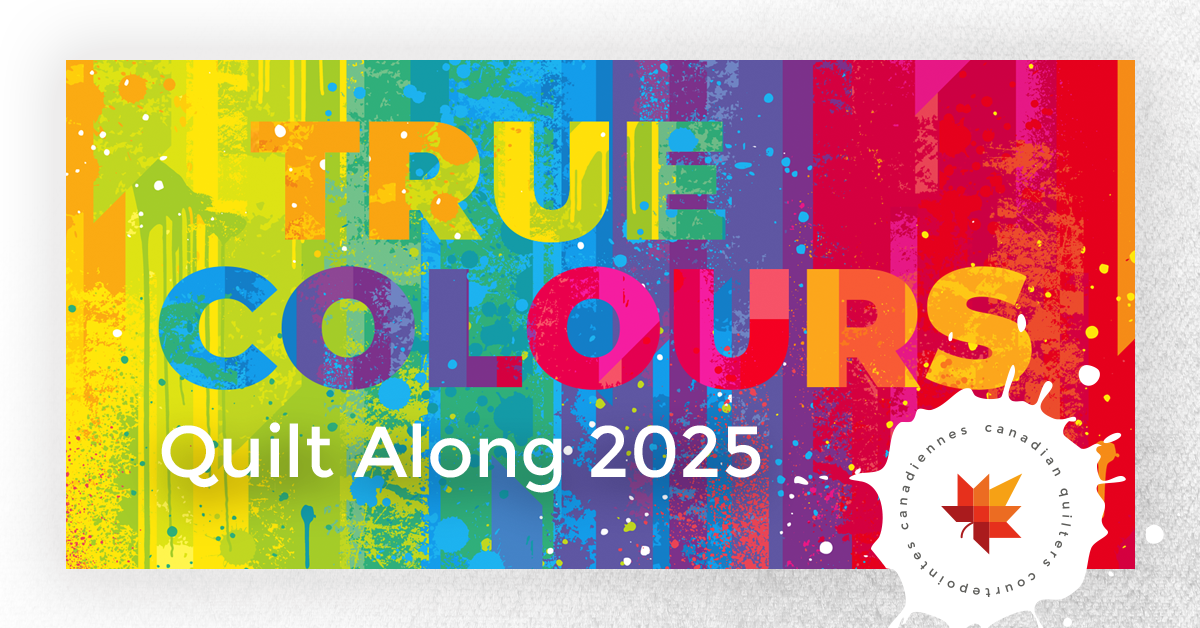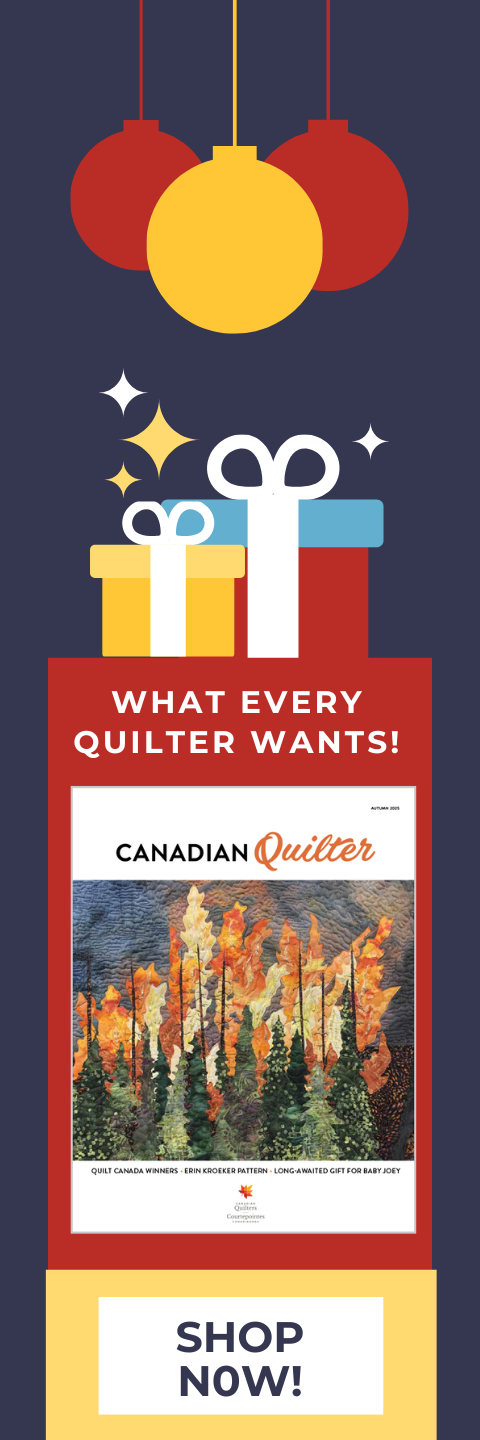To support CQA/ACC’s True Colours Quilt Along 2024, and help raise awareness of the challenges facing 2SLGBTQI+ communities, this is the first installment in a series of awareness articles you may find helpful. Find out more about the Quilt Along here.
You have likely seen many different versions of the acronym that helps to describe sexual and gender diversity. The most common version used in speech is LGBTQ, which stands for lesbian, gay, bisexual, transgender, and queer. Although useful as a verbal shorthand, the shorter acronym has evolved to become more inclusive. Depending on where you live, one acronym may be preferred over another.
That’s why, for the purposes of promoting the True Colours Quilt Along, CQA/ACC is using the acronym currently used by the Government of Canada: 2SLGBTQI+.
2S: Two-Spirit
Some, but not all, Indigenous communities use the term Two-Spirit to describe gender and sexual identity. The term was introduced in the early 1990s as an umbrella term to help communicate Indigenous perspectives on gender identity. You might think of it as a general term used to describe queer Indigenous people, but that’s not entirely accurate, and it’s meaning also varies between different Indigenous groups.
An easier way for non-Indigenous people to interpret the term may be to think of Two-Spirit people as those who have both masculine and feminine spirits. Although non-Indigenous societies tend to adhere to a more strict, binary concept of gender, many Indigenous communities have a broad spectrum of sexual orientation and gender identity.
When using the term Two-Spirit, Indigenous people may be referring to their sexual orientation, their gender identity, or their spirit (or some combination of these). And, some queer Indigenous people do not identify as Two-Spirit.
Finally, the term Two-Spirit is an Indigenous term and should not be appropriated by non-Indigenous people to describe themselves.
The following definitions are taken directly from the Government of Canada’s Glossary of 2SLGBTQI+ terminology.
L: Lesbian
Typically a woman who is sexually and/or romantically attracted to other women.
G: Gay
A person who is sexually and/or romantically attracted to people of their same sex or gender identity. Traditionally, this identity was reserved for men, but it has been adopted by people of all gender identities.
B: Bisexual/Biromantic
A person who is sexually and/or romantically attracted to two or more genders.
T: Transgender or Trans
A person whose gender identity differs from what is typically associated with the sex they were assigned at birth.
Q: Queer
Historically a derogatory term used as a slur against 2SLGBTQI+ people, this term has been reclaimed by many 2SLGBTQI+ people as a positive way to describe themselves, and as a way to include many diverse identities not covered by (the) common 2SLGBTQI+ acronym.
I: Intersex
An umbrella term to capture various types of biological sex differentiation. Intersex people have variations in their sex characteristics, such as sex chromosomes, internal reproductive organs, genitalia, and/or secondary sex characteristics (e.g. muscle mass, breasts) that fall outside of what is typically categorized as male or female.
+: Plus
Inclusive of people who identify as part of sexual and gender diverse communities, who use additional terminologies. (The use of + is meant to create an acronym that encompasses all sexual orientations and gender identities, including those not captured in 2SLGBTQI.)
For a more complete list of 2SLGBTQI+ terminology, visit the Government of Canada website.
Why is CQA/ACC celebrating sexual and gender diversity with the True Colours Quilt Along?
The mission of the Canadian Quilters Association/Association Canadienne de la courtepointe, is to promote and celebrate quilting in Canada, both historically and into the future. One of CQA/ACC’s objectives is to foster cooperation and sharing between quilt-makers across the country.
Furthermore, CQA/ACC seeks to grow the organization by attracting new members, younger quilters, quilters of diverse backgrounds, including quilters who are Black, Indigenous, and people of colour, as well as members of 2SLGBTQI+ communities. We aim to ensure that CQA/ACC provides a welcoming community for everyone, and for quilters of all types.
One of the ways we do that is to share stories from a diverse community of quilters in Canadian Quilter magazine and on the blog. Another way is to host the True Colours Quilt Along, to celebrate 2SLGBTQI+ communities, to help increase understanding of sexual and gender diversity, and to show support for 2SLGBTQI+ people who face challenges every day with acceptance and belonging.
We also encourage guilds to ensure their meetings are welcoming environments for all quilters. For some guidance around becoming a more inclusive guild, read Bill Stearman’s article on the CQA/ACC blog.
We welcome you to make a True Colours quilt for yourself, for a friend or member of your family, or for a local organization that provides support to 2SLGBTQI+ youth and adults. Watch for updates about the 2025 Quilt Along, which starts in January, here.


